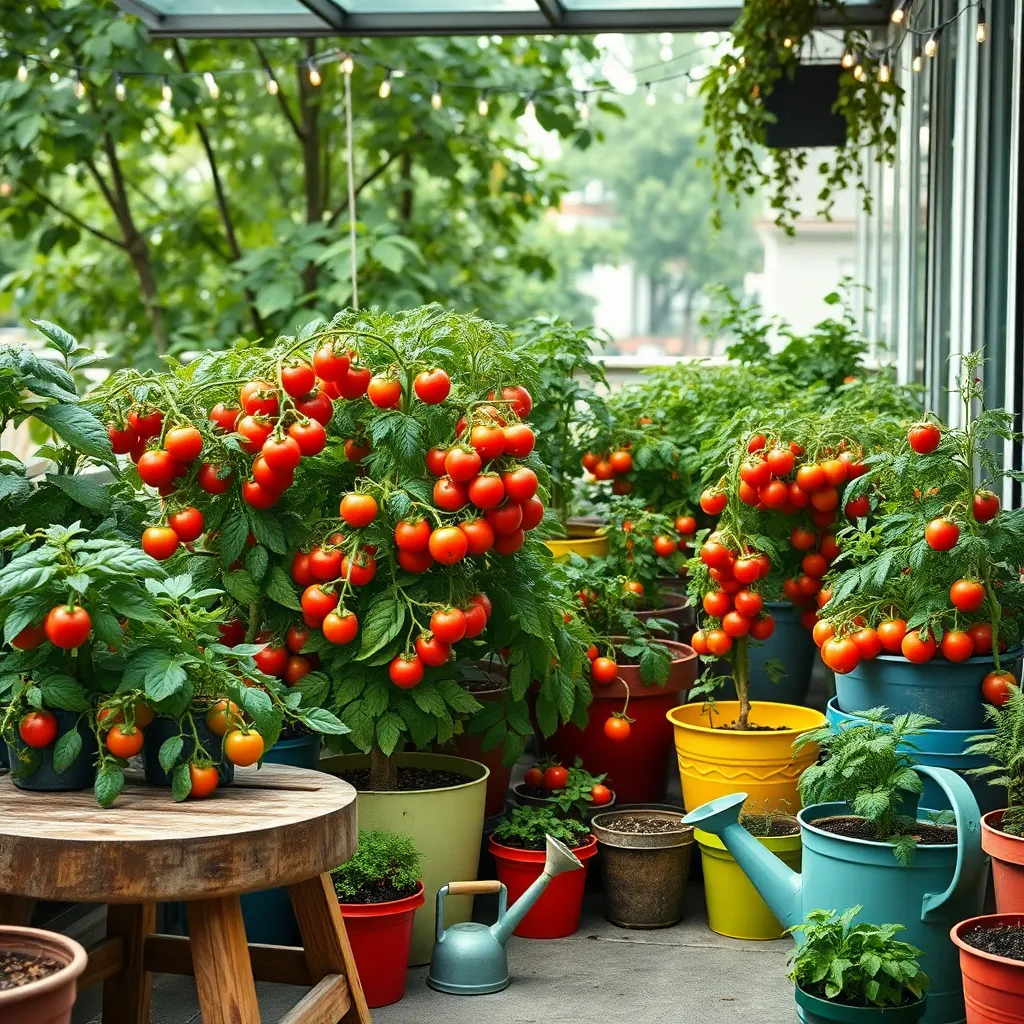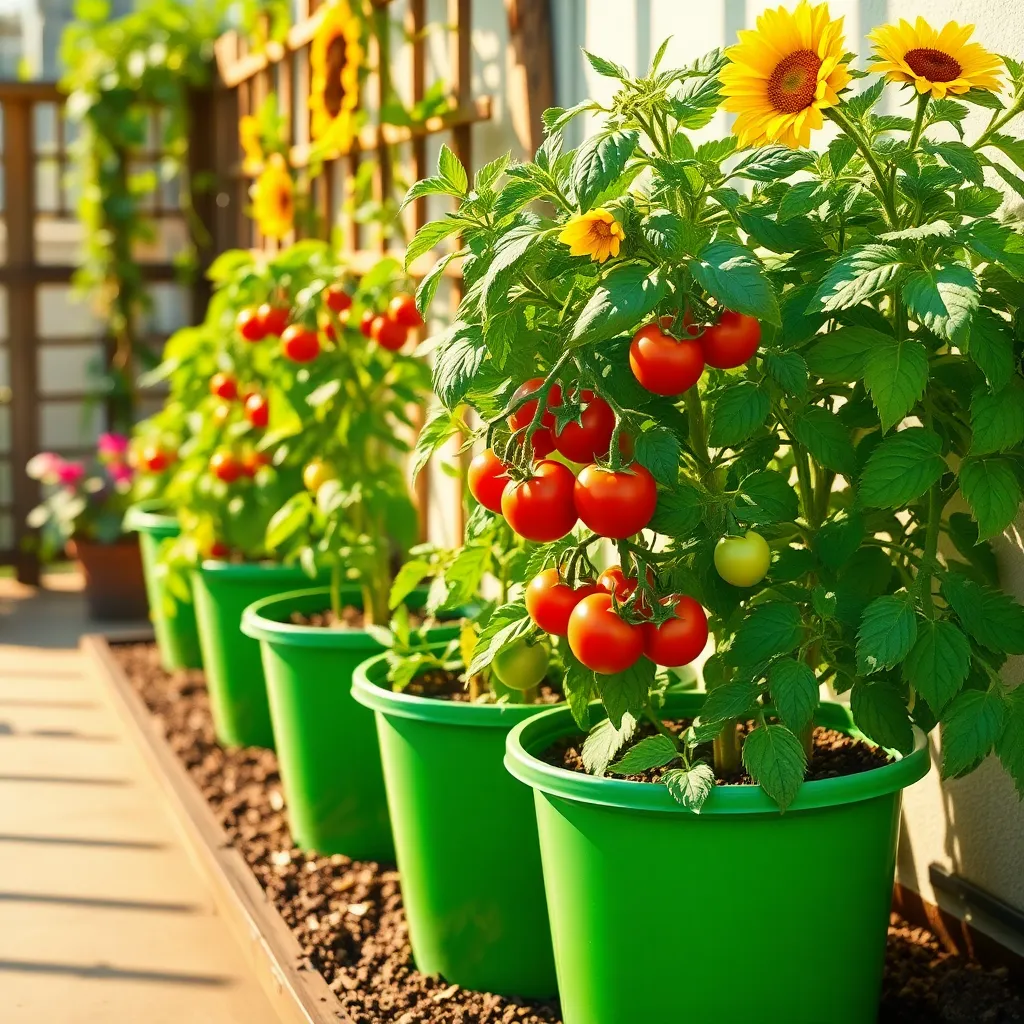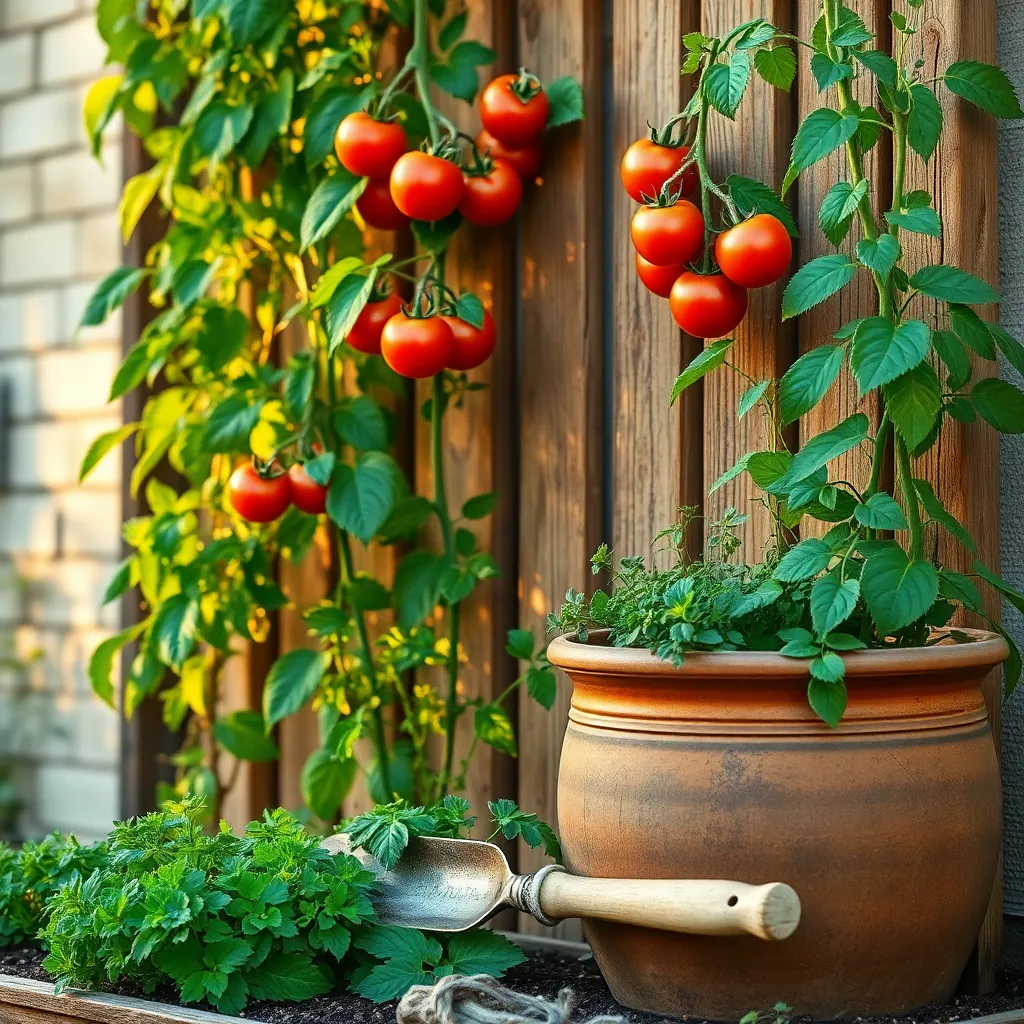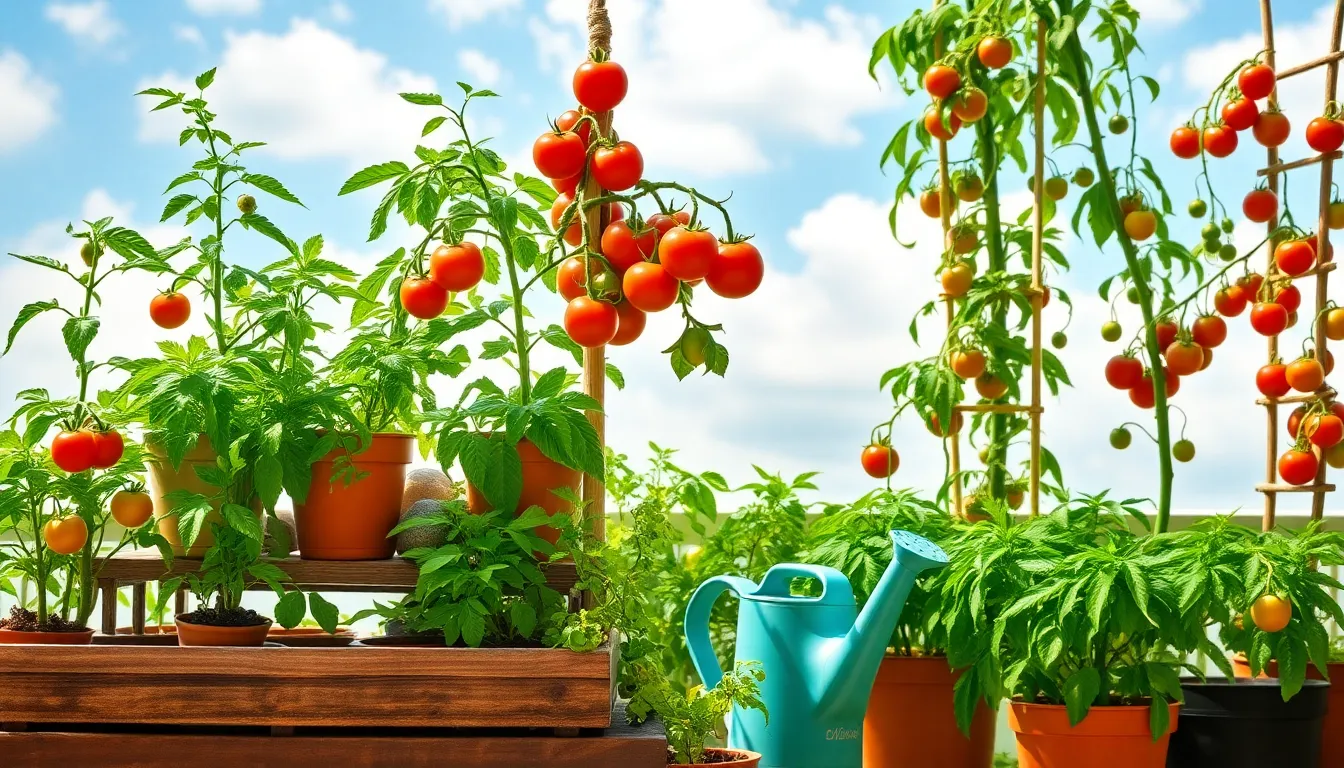The joy of plucking a ripe, juicy tomato from your own garden is a pleasure that knows no bounds, whether you’re new to gardening or have a well-worn trowel at the ready. For those of us with limited space, the art of growing tomatoes can seem elusive, yet, with a little creativity and the right guidance, even the smallest urban balcony or modest patio can transform into a thriving tomato haven.
Understanding the nuances of cultivating tomatoes in tight quarters is not just a skill but an empowering venture into sustainable living. In this article, you’ll discover innovative techniques and practical tips tailored for maximizing your harvest without the luxury of sprawling garden beds. Whether you’re a seasoned gardener looking to optimize your yield or a beginner eager to embark on your first tomato-growing journey, this guide will equip you with the knowledge to make the most of every inch. Dive in, and let’s unlock the potential of your small space together, fostering a rewarding gardening experience that yields delicious results.
Select Compact Tomato Varieties

Choosing the right tomato variety is crucial when growing in small spaces. Opt for compact or dwarf tomato varieties that thrive in containers or limited garden areas.
One excellent choice is the ‘Tiny Tim’ tomato, which grows only about 12 to 18 inches tall. This variety produces tasty, small cherry tomatoes and is perfect for a sunny windowsill or balcony.
Additionally, consider the ‘Patio Princess’ variety, known for its ability to grow well in pots. It yields an abundance of medium-sized, juicy tomatoes while requiring minimal space.
For those seeking a more exotic option, ‘Balcony Yellow’ is a striking choice with vibrant yellow fruits. These tomatoes are not only visually appealing but also offer a sweet, tangy flavor, making them a delightful addition to any small garden.
Regardless of the variety you choose, ensure your tomatoes receive at least 6-8 hours of sunlight daily. Use a well-draining potting mix and water consistently, allowing the soil to dry slightly between waterings to prevent root rot.
Fertilizing is essential for container-grown tomatoes, as nutrients can quickly deplete. Apply a balanced, water-soluble fertilizer every two weeks to support healthy growth and abundant fruiting.
To further maximize space, consider using vertical supports or cages even for compact varieties. This technique not only saves space but also improves air circulation and reduces the risk of disease.
Choose Space-Efficient Containers

When growing tomatoes in small spaces, choosing the right containers is crucial. Opt for containers that are deep enough to support root growth, ideally at least 12 inches deep. This depth ensures that your tomato plants have the space they need to establish a healthy root system, which is vital for nutrient uptake and stability.
Consider using fabric pots or grow bags, as they are lightweight and promote excellent root aeration. These containers prevent roots from becoming root-bound and help regulate moisture levels, which is essential for maintaining healthy plants. For added convenience, fabric pots can be easily moved to capture optimal sunlight or protect plants from harsh conditions.
Self-watering containers are another excellent choice for small-space gardening. They help maintain consistent moisture levels, which is particularly beneficial for tomatoes, as inconsistent watering can lead to issues like blossom end rot. Self-watering systems reduce the need for frequent watering, making them a practical choice for busy gardeners or those new to tomato cultivation.
Always ensure that your containers have adequate drainage holes to prevent waterlogging. For improved drainage, consider adding a layer of coarse gravel or broken pottery at the bottom of the container. This practice will help prevent root rot by allowing excess water to escape, keeping your tomato plants healthy and thriving.
Ensure Adequate Sunlight Exposure

To grow healthy tomatoes in small spaces, ensuring they receive adequate sunlight is crucial. Tomatoes thrive in full sun, which means they need at least six to eight hours of direct sunlight each day.
Position your containers in the sunniest spot available, such as a south-facing balcony or patio. If natural sunlight is limited, consider using grow lights to supplement light exposure, ensuring your plants get enough energy to produce fruit.
For those with limited outdoor space, rotating your containers periodically can help maximize sun exposure. This technique ensures all parts of the plant receive adequate light, promoting even growth and preventing leggy stems.
Be mindful of any structures or trees that may cast shade on your tomatoes throughout the day. Adjust the placement of your containers as needed, especially during different seasons, to make the most of available sunlight.
Implement Vertical Support Systems

To make the most of small spaces when growing tomatoes, implementing vertical support systems is essential. Using vertical supports not only saves space but also helps maintain plant health and increases fruit production.
Start by selecting sturdy stakes, cages, or trellises that suit your garden’s needs. Tomato cages are ideal for beginners as they provide comprehensive support with minimal setup effort.
For more advanced gardeners, consider using a trellis system, which can maximize vertical growth and improve sunlight exposure. When using a trellis, gently tie the tomato stems to the structure with soft garden ties or twine to avoid damaging the plant.
Position the supports in the soil when you transplant your seedlings to prevent root disturbance later on. As your plants grow, regularly check that they are securely attached to the supports to prevent any breakage or bending under the weight of the tomatoes.
Water consistently and deeply to encourage strong root development, ensuring the soil remains moist but not waterlogged. A good rule of thumb is to water once a week, adjusting frequency based on rainfall and temperature.
Maintain Consistent Watering Schedule

To successfully grow tomatoes in small spaces, maintaining a consistent watering schedule is crucial. Tomato plants thrive with regular and even moisture levels, which helps prevent issues like blossom end rot and splitting.
Begin by checking the soil moisture daily, especially during hot weather. Insert your finger about an inch into the soil; if it feels dry, it’s time to water.
Water deeply but infrequently to encourage roots to grow deeper into the soil. Aim to water at the base of the plant early in the morning to reduce evaporation and disease risk.
For those using containers, they tend to dry out more quickly, so adjustments may be necessary. Consider using self-watering pots or adding a layer of mulch to retain moisture.
Conclusion: Growing Success with These Plants
In nurturing relationships, much like growing tomatoes in small spaces, success hinges on a few key principles. We explored five fundamental concepts: creating a strong foundation with clear communication, nurturing growth through consistent care and attention, overcoming obstacles with patience and understanding, fostering resilience by adapting to changing circumstances, and celebrating the small victories along the way. These strategies mirror the essence of cultivating lush tomato plants in limited spaces, proving that with the right approach, flourishing relationships are achievable even in the most constrained environments.
As your actionable next step, take a moment today to express appreciation to your partner for something small yet meaningful. It’s the little gestures that often yield the ripest rewards.
We encourage you to bookmark this article as a handy guide for nurturing your relationships. By doing so, you’ll have these insights at your fingertips whenever you need a reminder or a boost. Remember, with dedication and the right strategies, your relationships can thrive just like a bountiful tomato harvest. Here’s to cultivating love and connection that grows strong and resilient over time. Save this article now, and let it guide your journey to relationship success.


